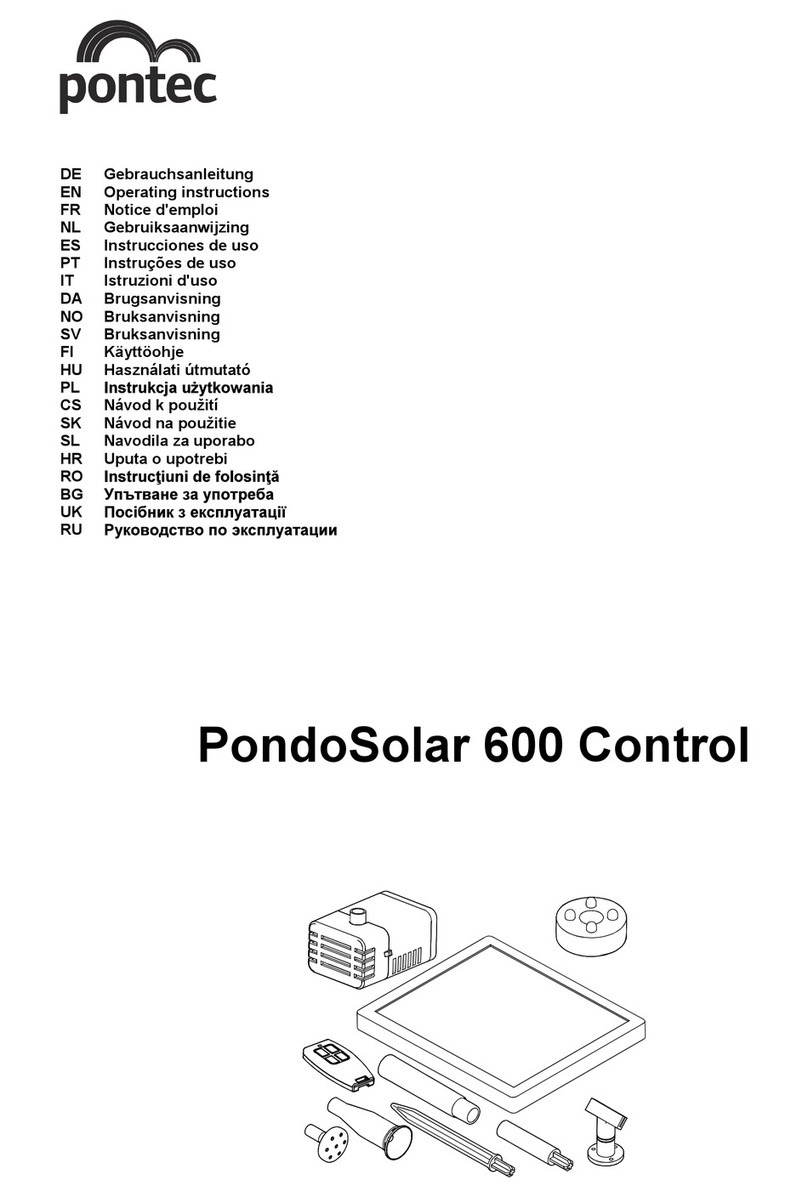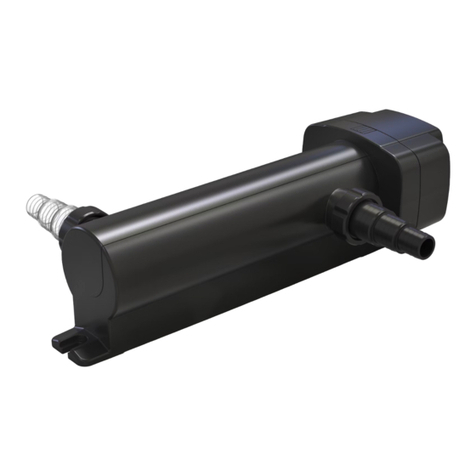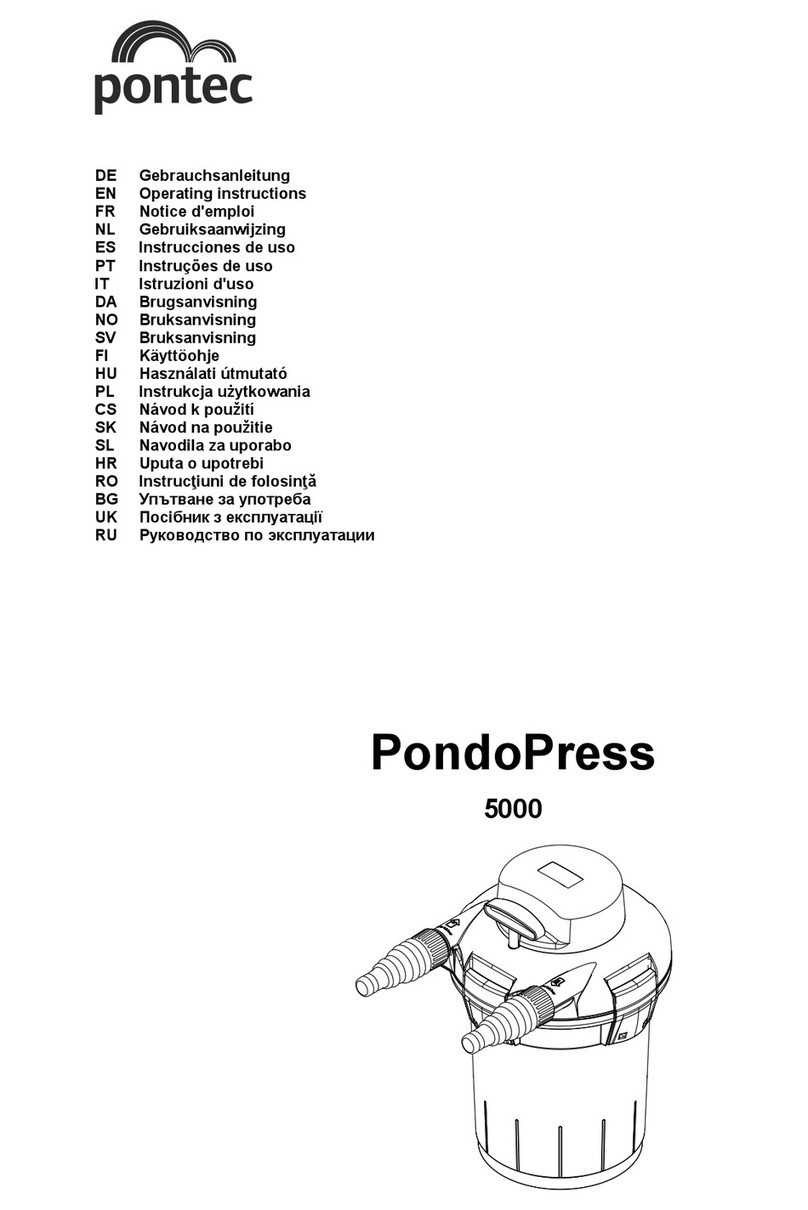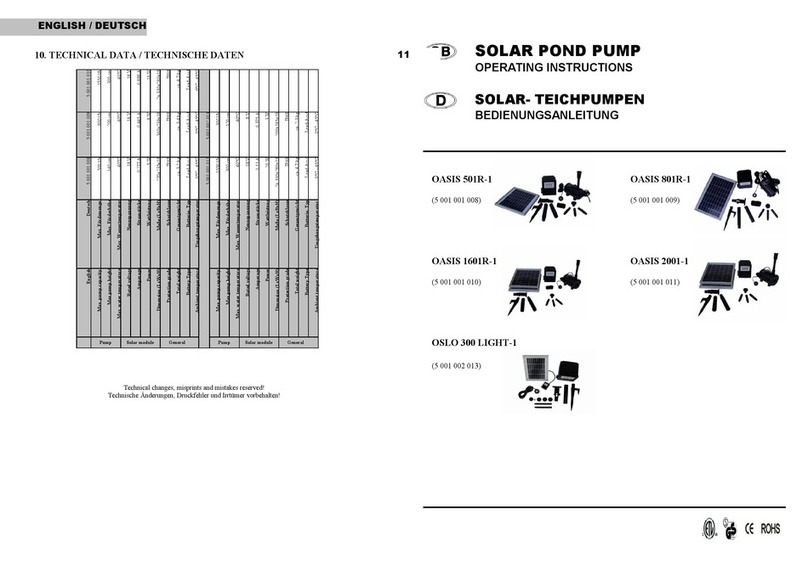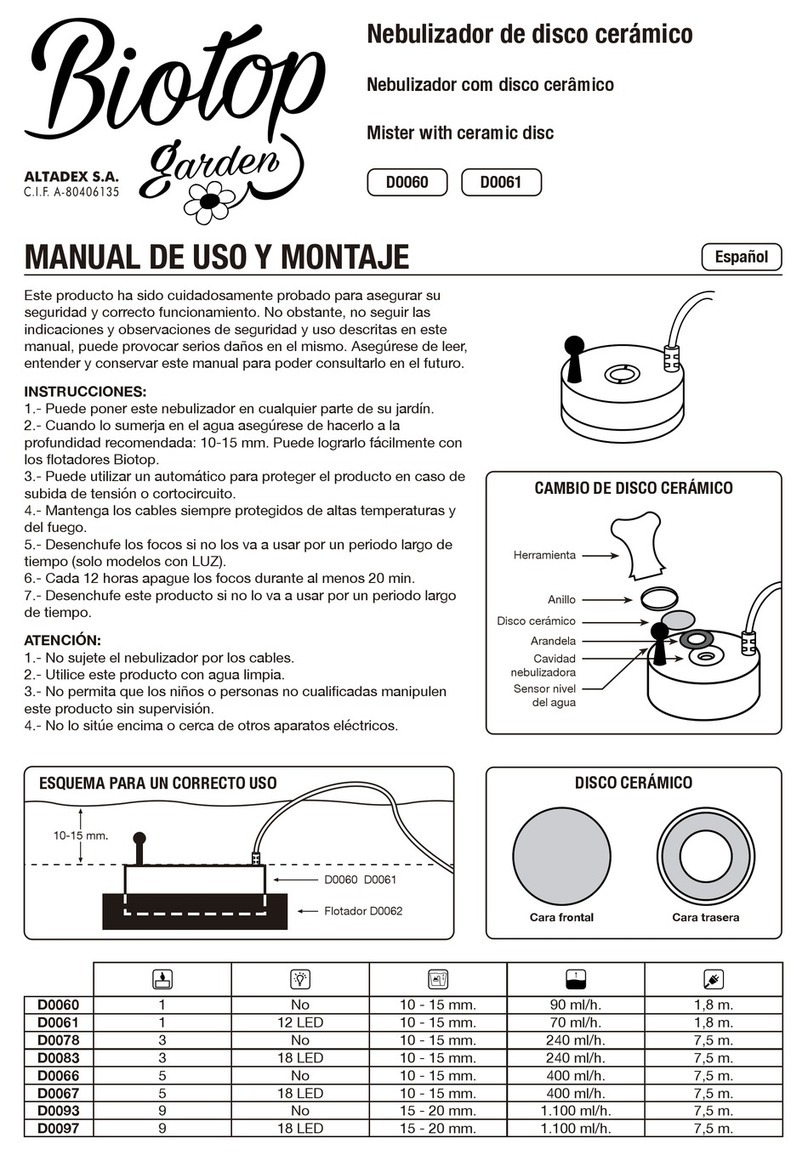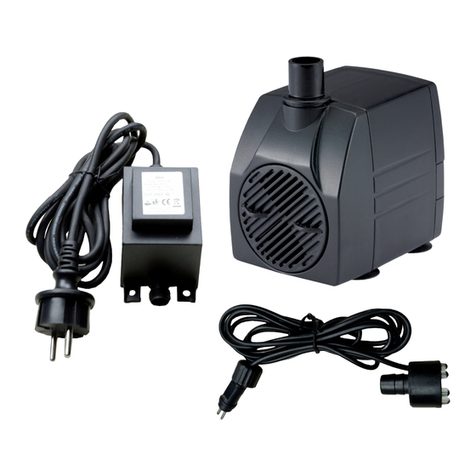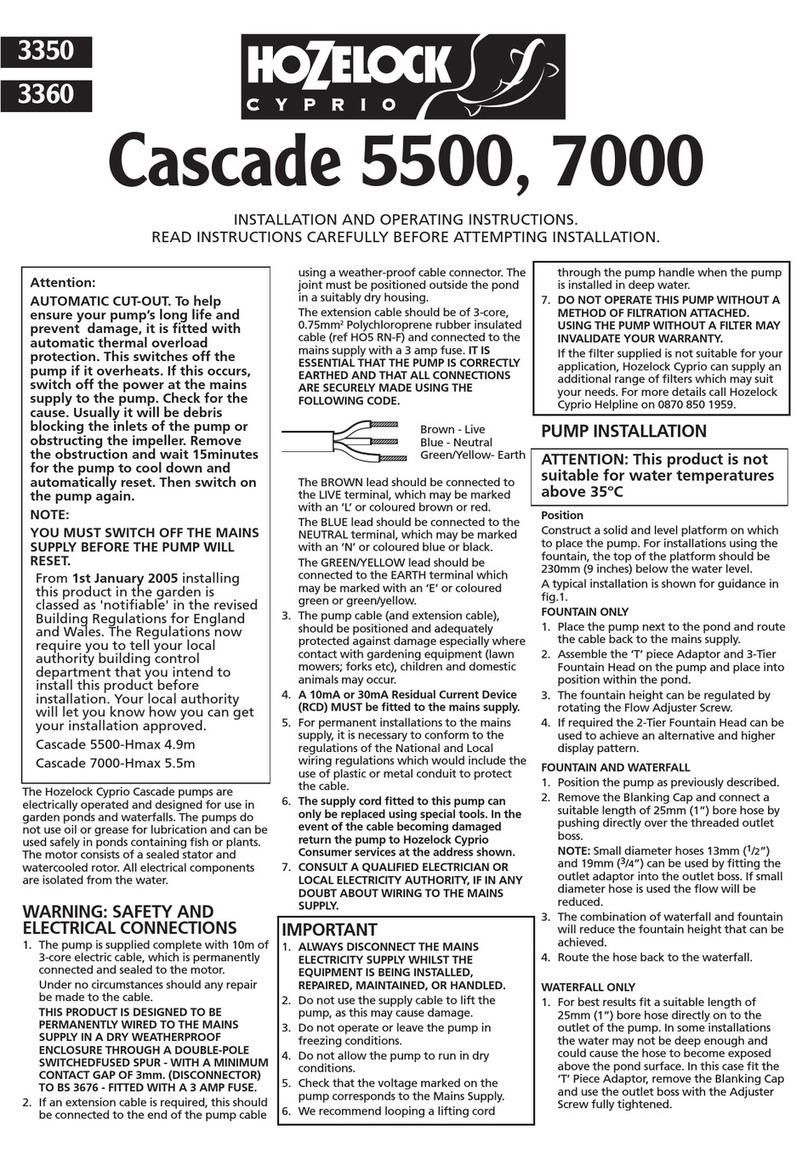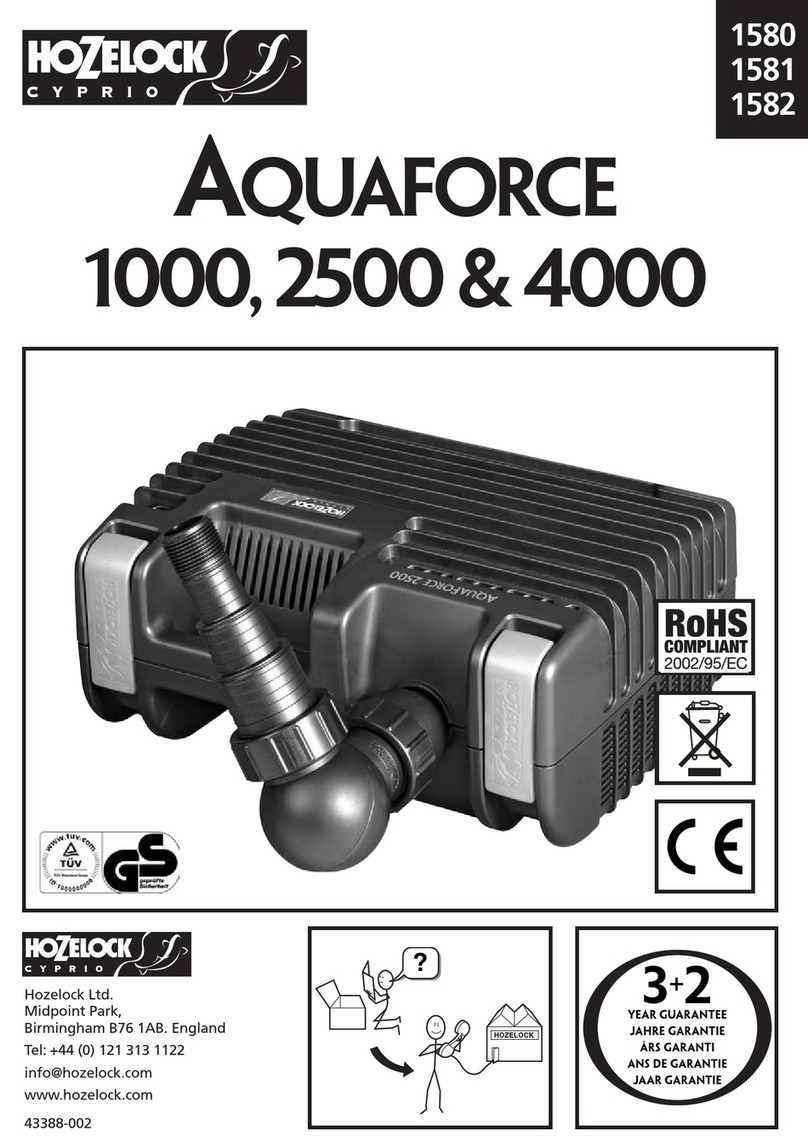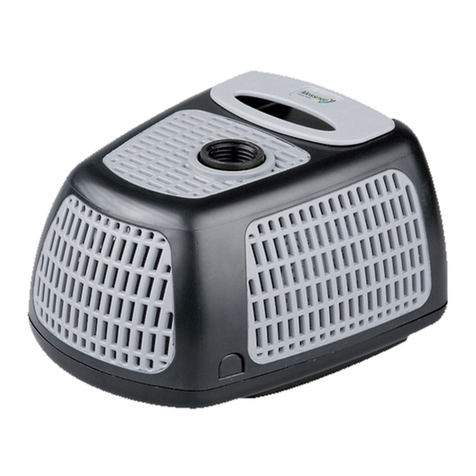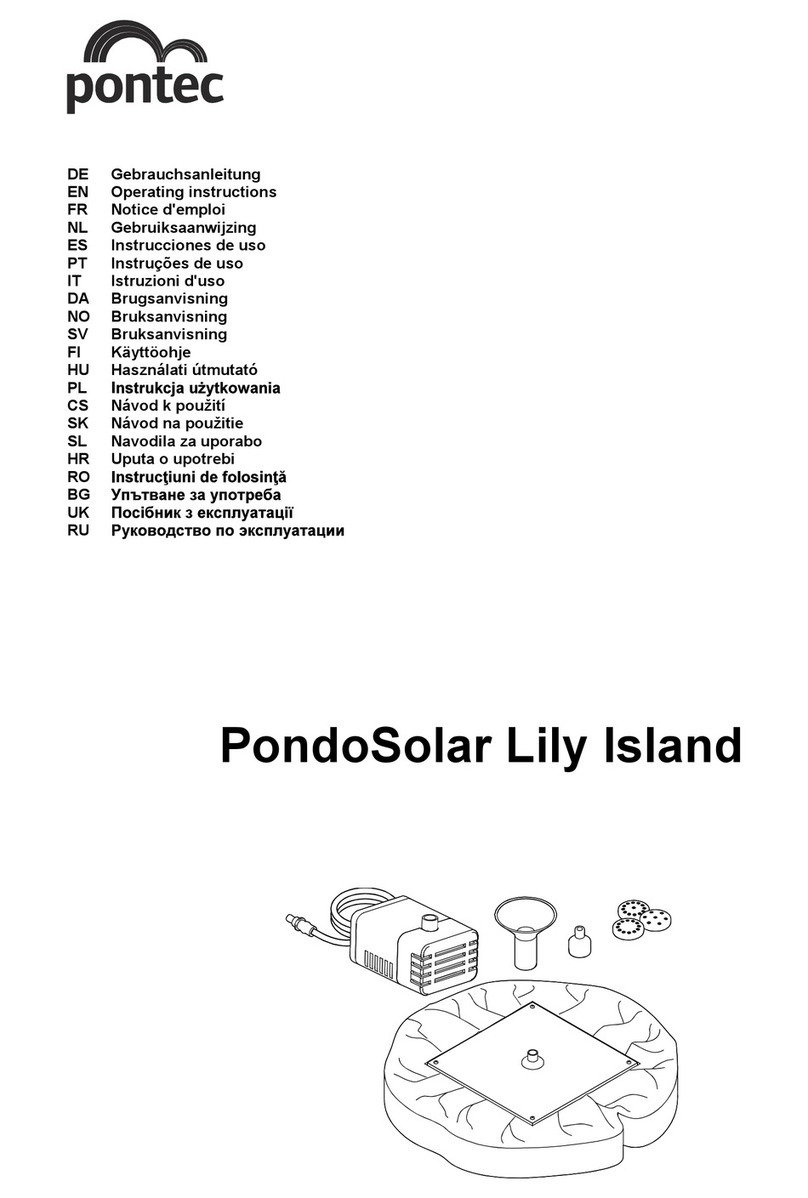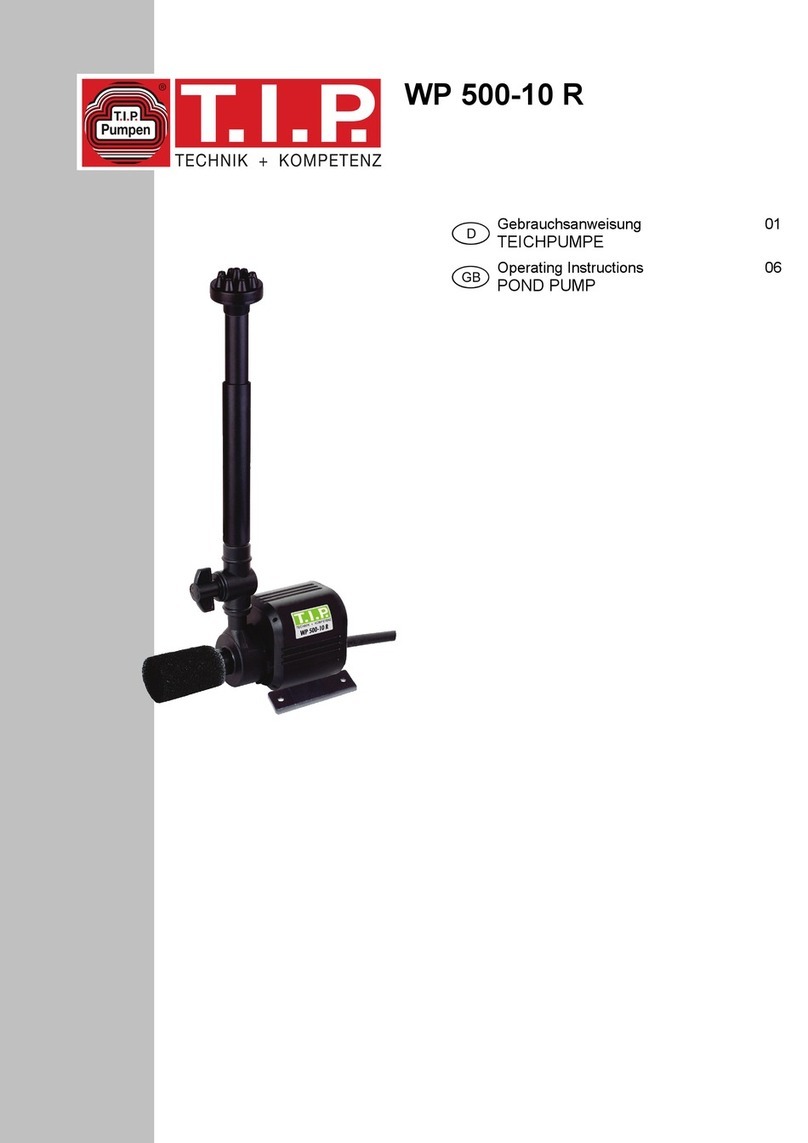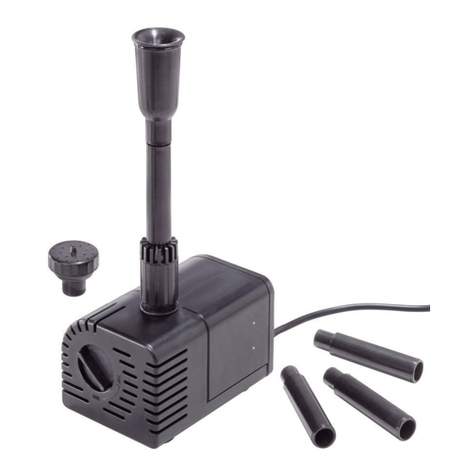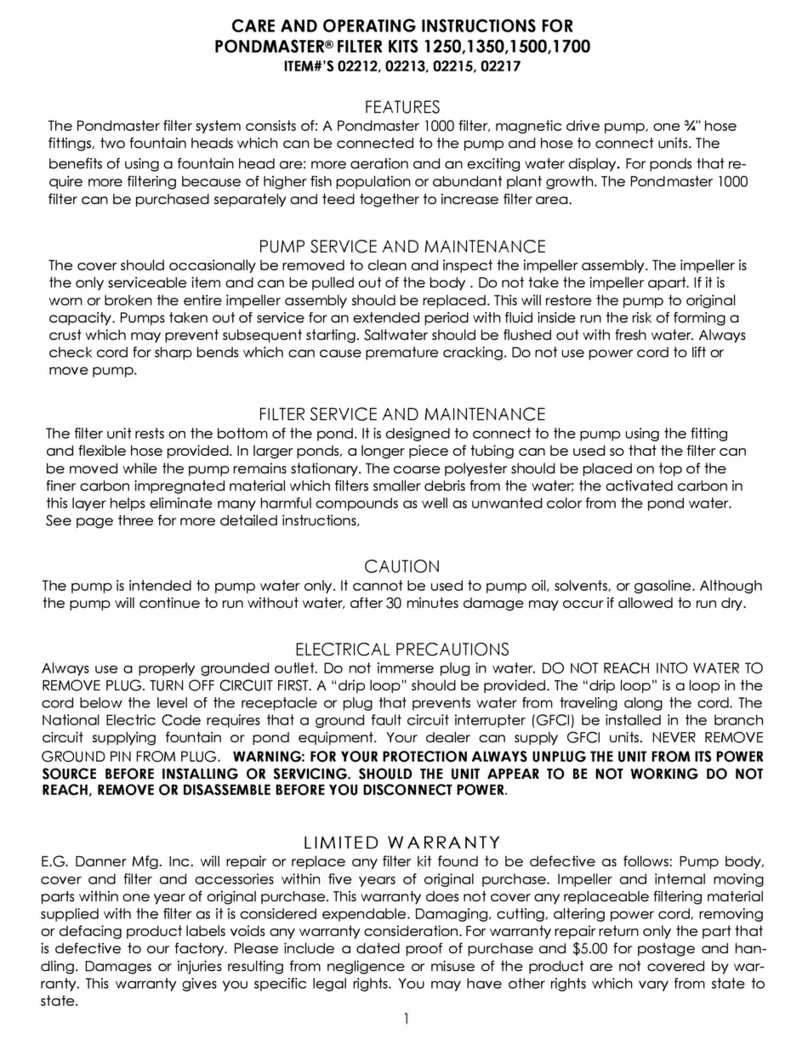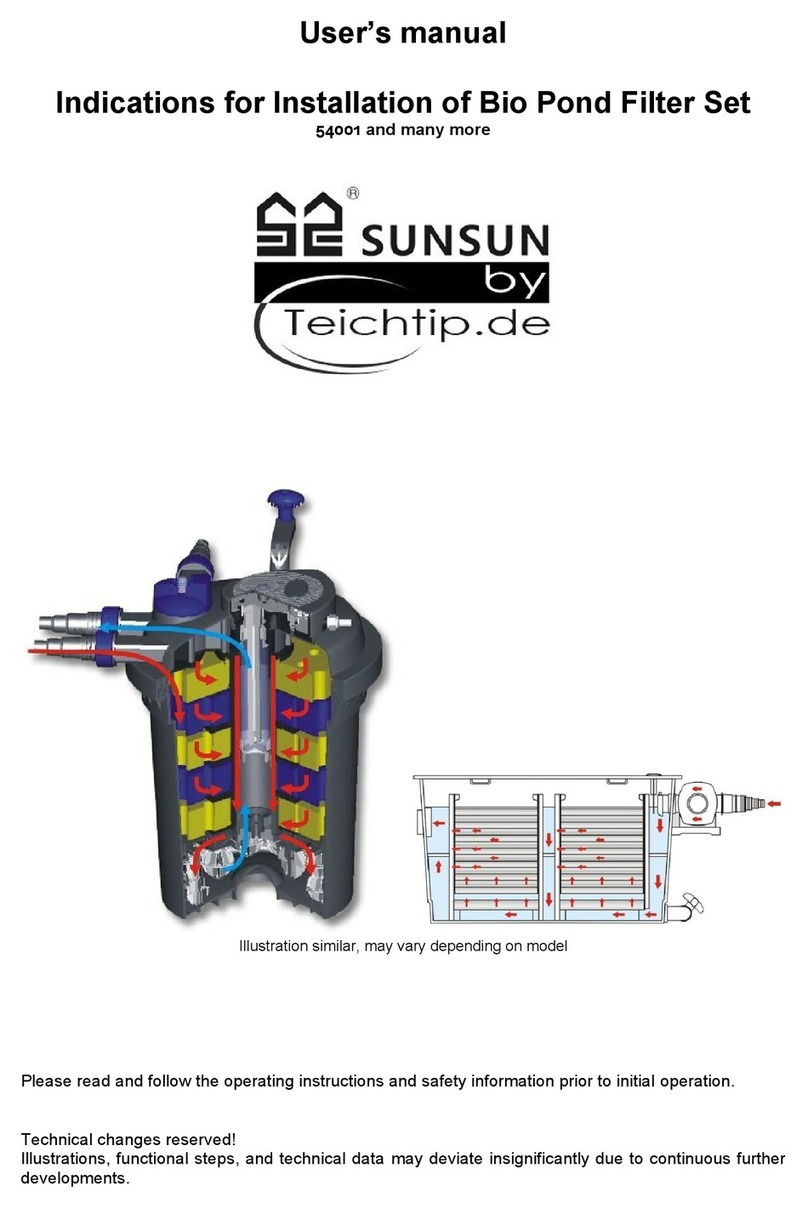-DE -
8
Reinigung und Wartung
WARNUNG
Tod oder schwere Verletzungen durch gefährliche elektrische Spannung!
•Bevor Sie ins Wasser greifen, Netzspannung aller im Wasser befindlichen Geräte abschalten.
•Vor Arbeiten am Gerät Netzspannung abschalten.
Hinweis:
•Kontrollieren und reinigen Sie den Wasserablauf zum Teich regelmäßig.
•Die Filtermedien regelmäßig (z.B. alle vier Wochen) reinigen, spätestens, wenn aus dem Wasserauslass trübes oder
schmutziges Wasser in den Gartenteich zurückgeleitet wird.
•Zunächst eine Schnellreinigung durchführen. Falls dies nicht ausreicht, eine Komplettreinigung durchführen.
•Ein verstopfter Filter kann zu Undichtigkeiten führen.
•Verwenden Sie keine chemischen Reinigungsmittel.
Schnellreinigung (D)
Schlauch vom Filterauslauf durch Abdrehen der Überwurfmutter entfernen und einen Schmutzablaufschlauch befesti-
gen.
Filterpumpe wieder einschalten und kräftig am Reinigungsgriff ziehen und mehrmals „pumpen“. Die Filterschäume wer-
den so mechanisch gereinigt, bis das auslaufende Wasser klar wird.
Komplettreinigung (E)
Falls nötig, Filtermedien auswaschen bzw. ersetzen. Verwenden Sie keine chemischen Reinigungsmittel. Filterpumpe
ausschalten (C4), alle Schläuche durch Abdrehen der Überwurfmuttern entfernen, die Verschlussklammern des Filter-
behälters öffnen (E1), Deckel mit Filterschaumpaket abheben (E2) und mit dem Kopf auf eine weiche saubere Unter-
lage legen, so dass die Filterschäume mit dem Pressring nach oben liegen. Pressring durch Lösen der Mutter von der
Zugstange abschrauben, Filterschäume abziehen und durch kräftiges Zusammendrücken unter fließendem Wasser
reinigen. Bioballs, Lavasteine, Behälter, Deckel mit Gitterrohr und Pressring sauber abspritzen (E3). Filterschäume
aufschieben, so dass die Zugstange in der Aussparung der Filterschäume liegt. Pressring mit der Stangenführung
nach unten aufsetzen und mit der Mutter an die Zugstange anschrauben. Das Gitterrohr muss komplett im Ringdurch-
messer liegen. Deckeldichtung vom Behälter abnehmen und auf Beschädigungen überprüfen, reinigen bzw. ersetzen
und auf den oberen Rand des Behälters auflegen, Deckel mit Filterschaumpaket auf den Behälter aufdrücken, Ver-
schlussklammern einrasten (E4). Schlauch am Filtereinlass montieren, Filterpumpe in Betrieb nehmen (C1), den
Druckfilter nachspülen, bis das auslaufende Wasser klar wird. Filterpumpe ausschalten (C4), Schmutzablaufschlauch
entfernen, Auslaufschlauch wieder aufschrauben, erst die Filterpumpe wieder in Betrieb nehmen (C1), dann den Netz-
stecker des UVC-Vorklärgerätes einstecken (C2).
Quarzglas reinigen / UVC-Lampe ersetzen
VORSICHT
Die ultraviolette Strahlung der UVC-Lampe kann Augen oder Haut verbrennen.
•UVC-Lampe niemals außerhalb des Gehäuses betreiben.
•UVC-Lampe niemals in einem defekten Gehäuse betreiben.
VORSICHT
Quarzglas und UVC-Lampe können zerbrechen und Schnittverletzungen verursachen.
•Vorsichtig mit Quarzglas und UVC-Lampe umgehen.
HINWEIS
Aus Sicherheitsgründen lässt sich die UVC-Lampe erst einschalten, wenn der Gerätekopf ordnungsgemäß in
das Gehäuse eingebaut ist.
